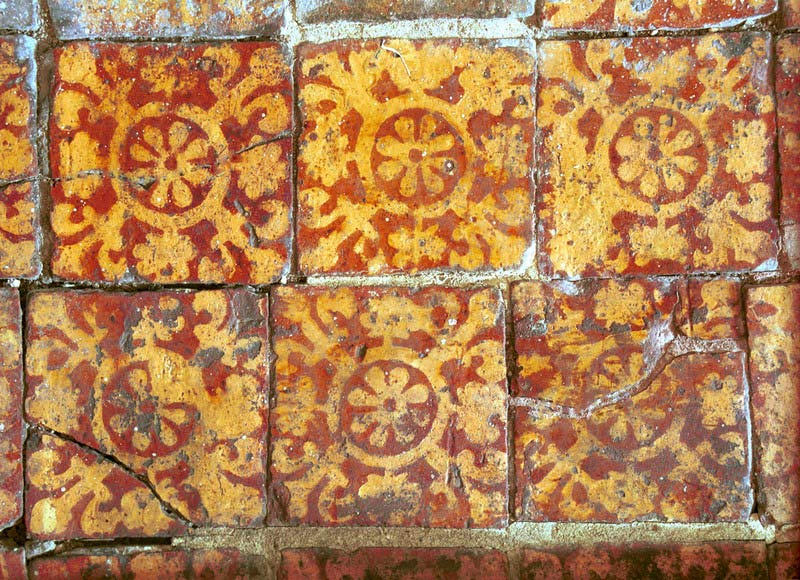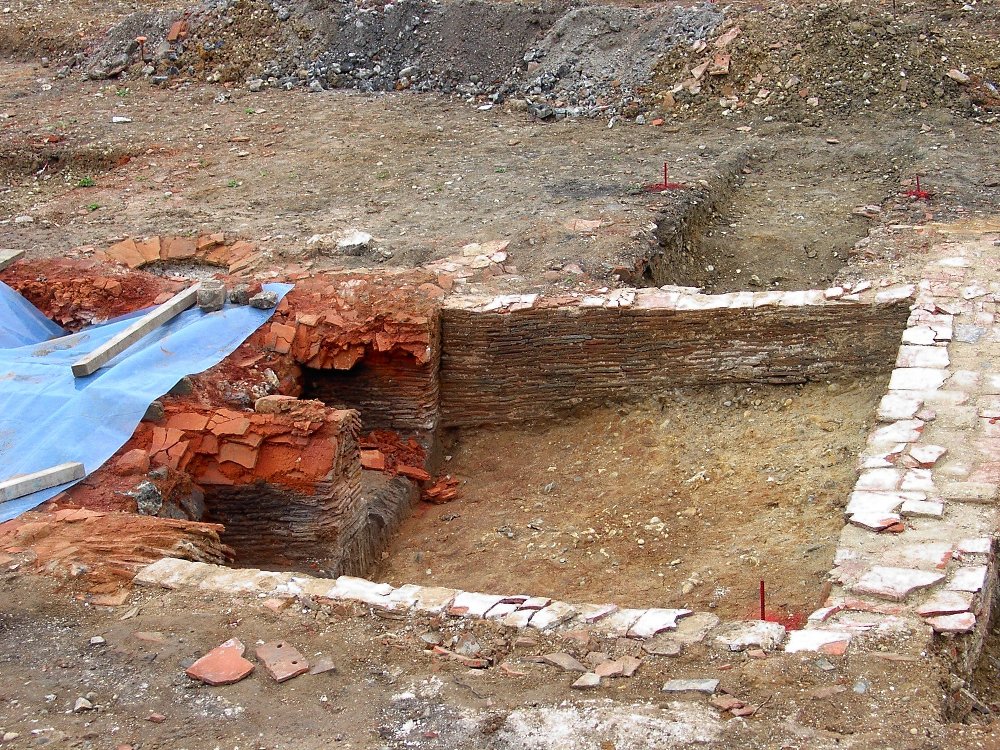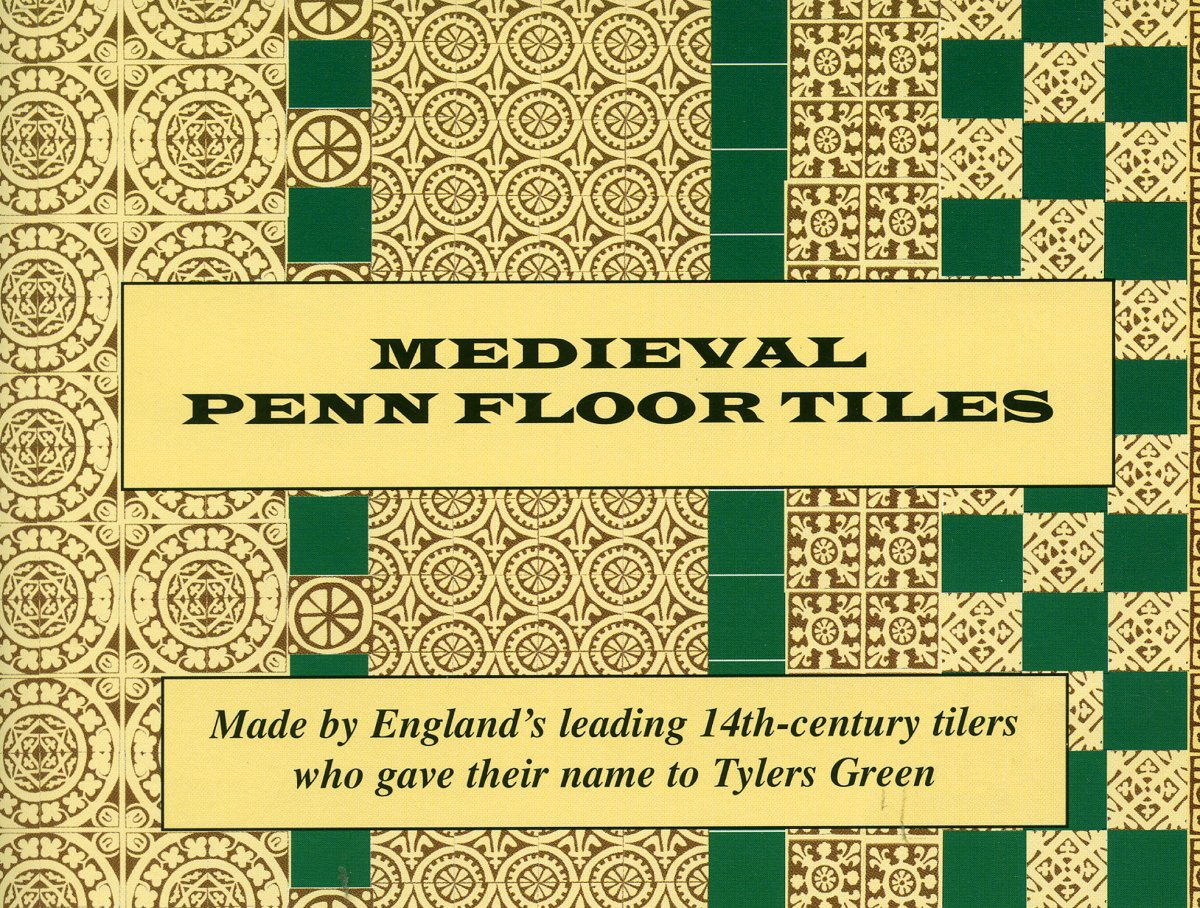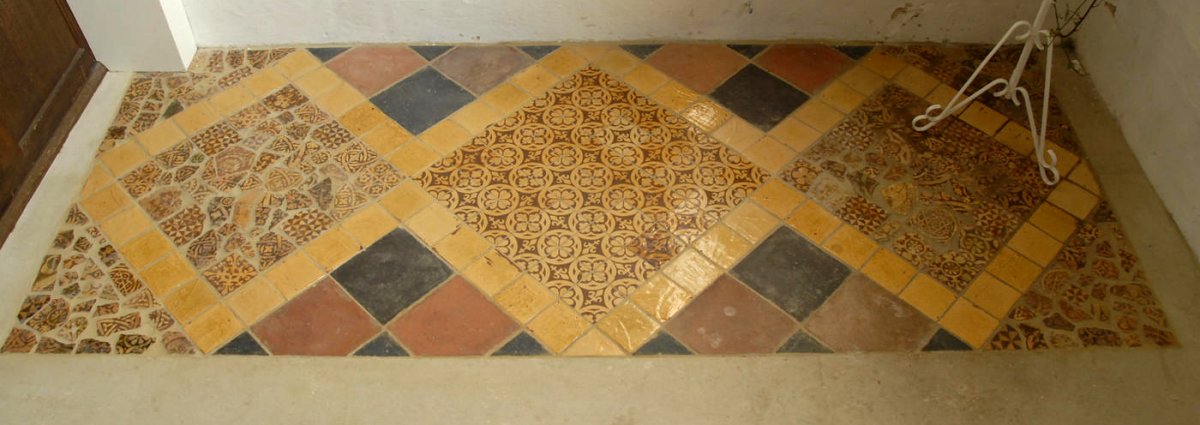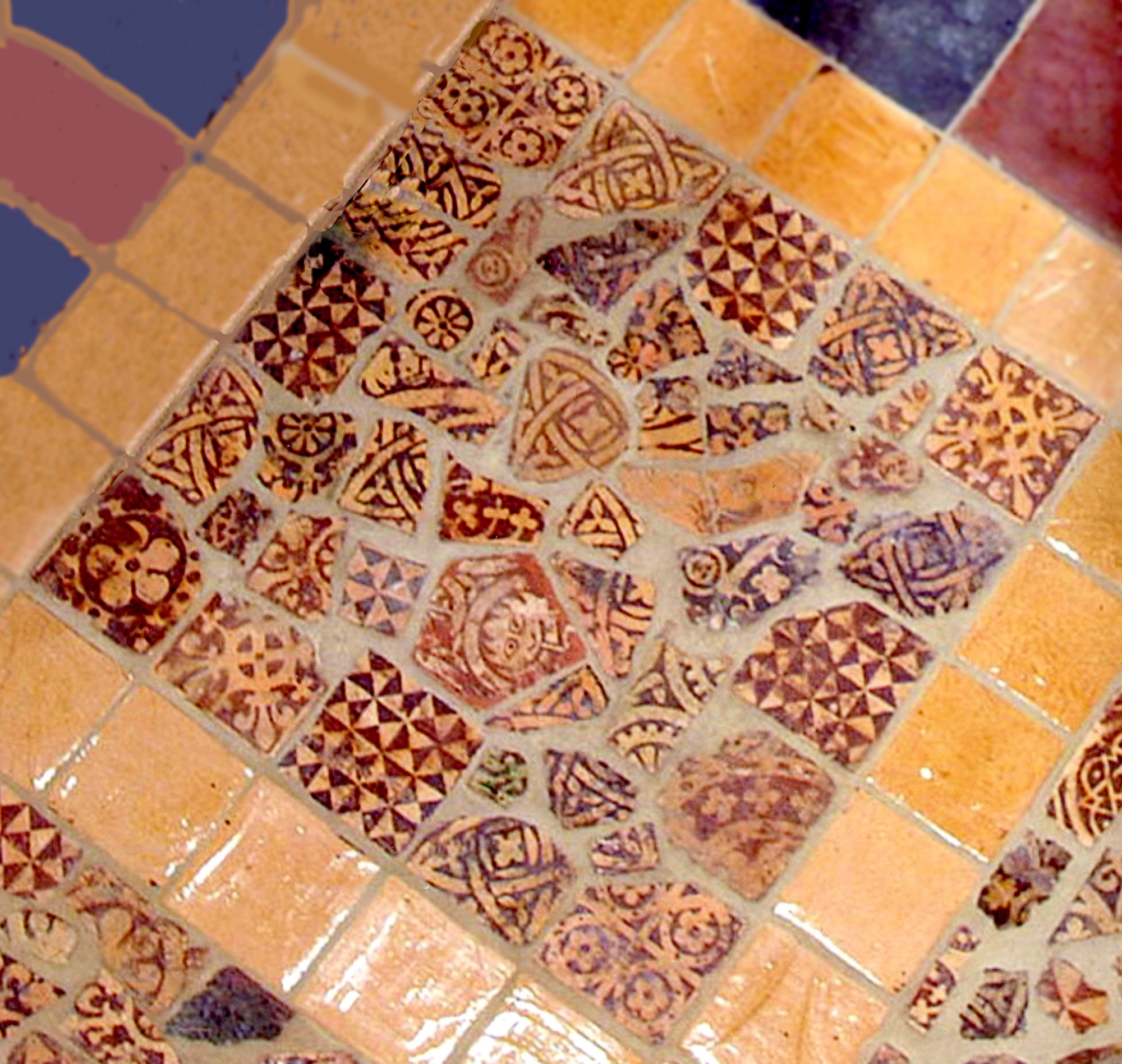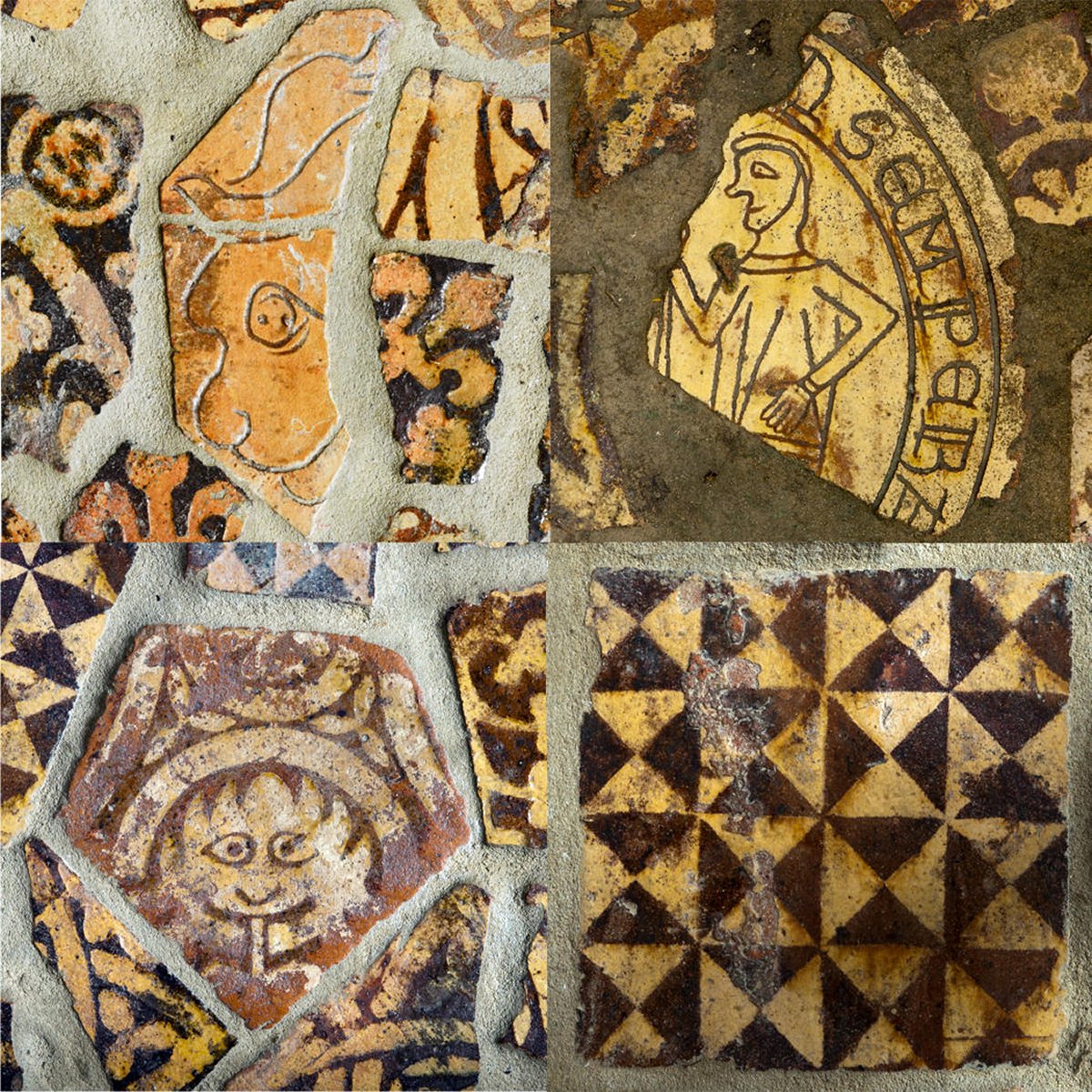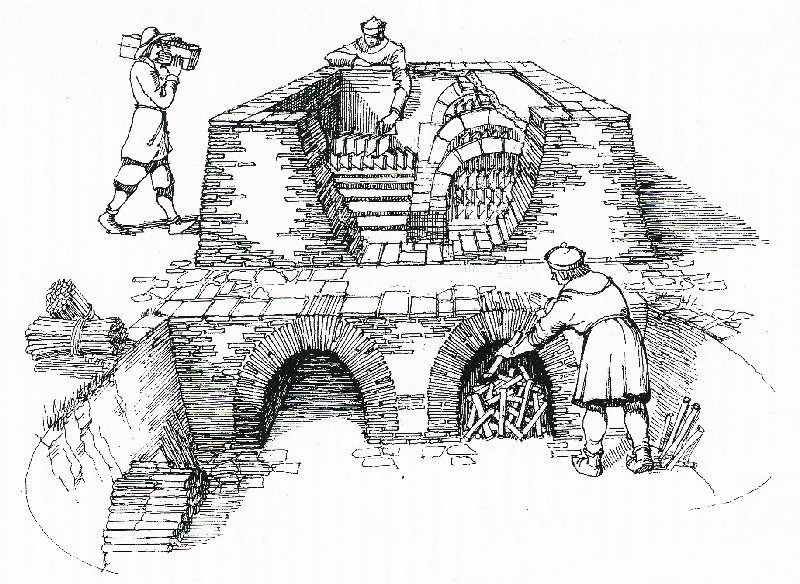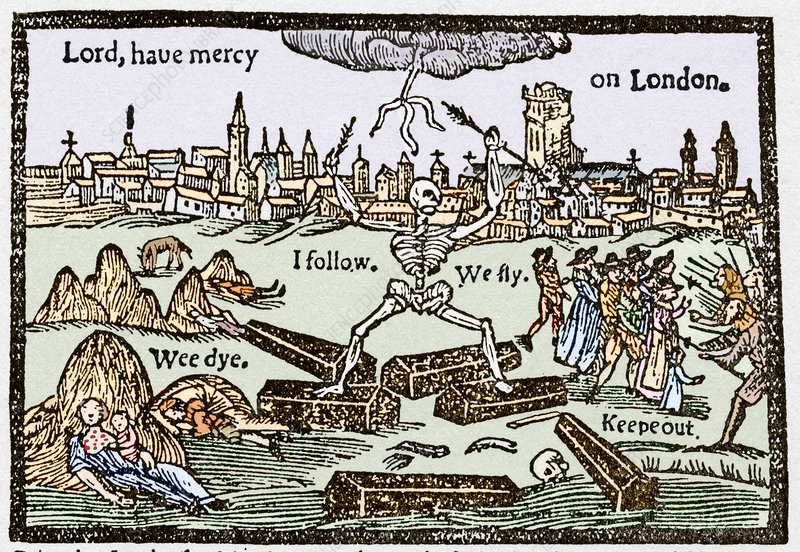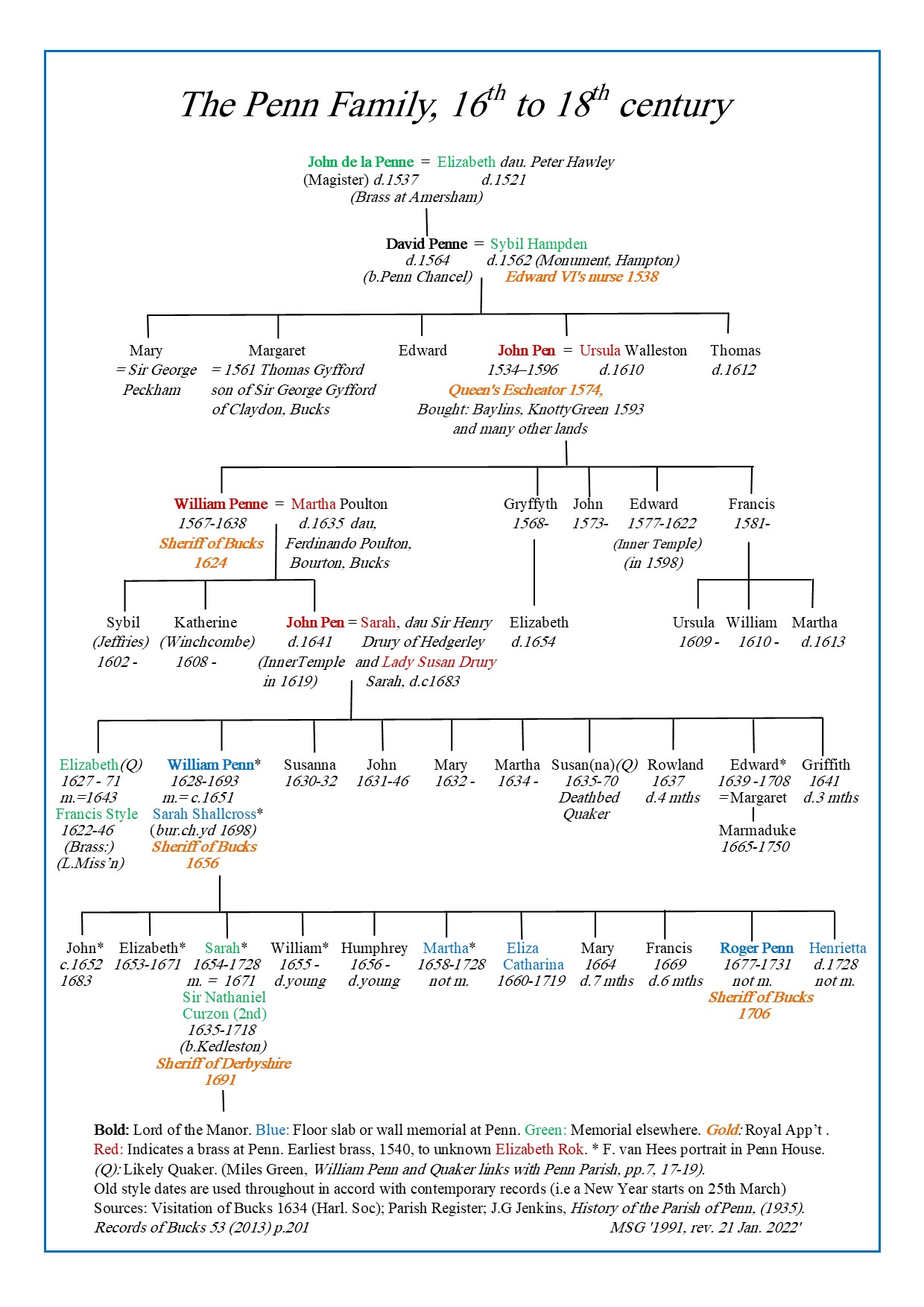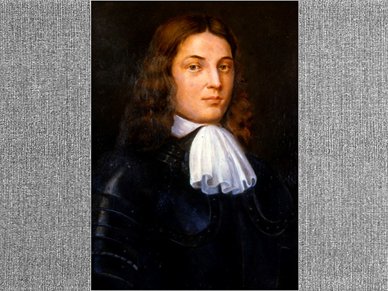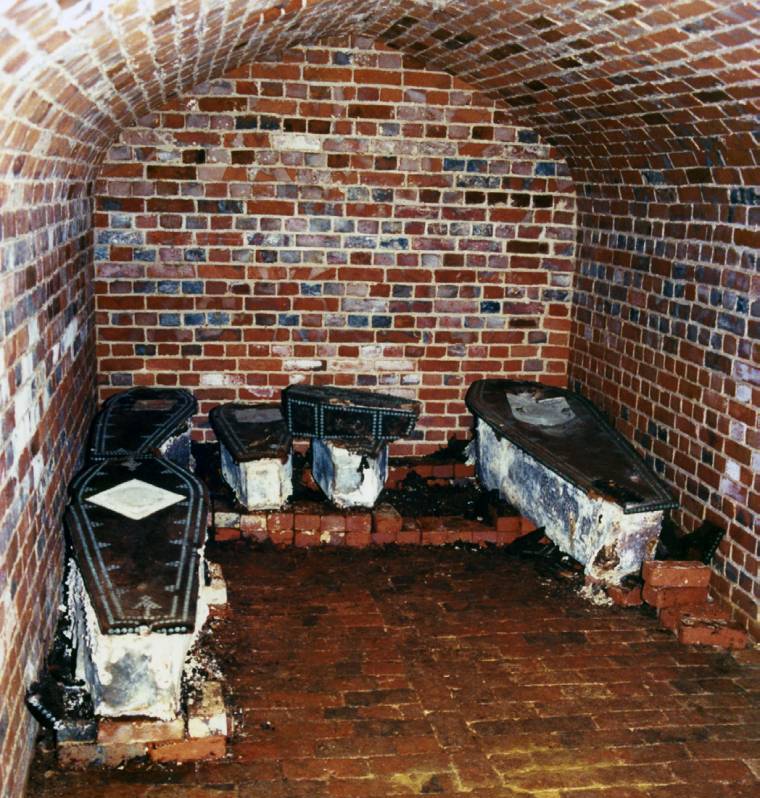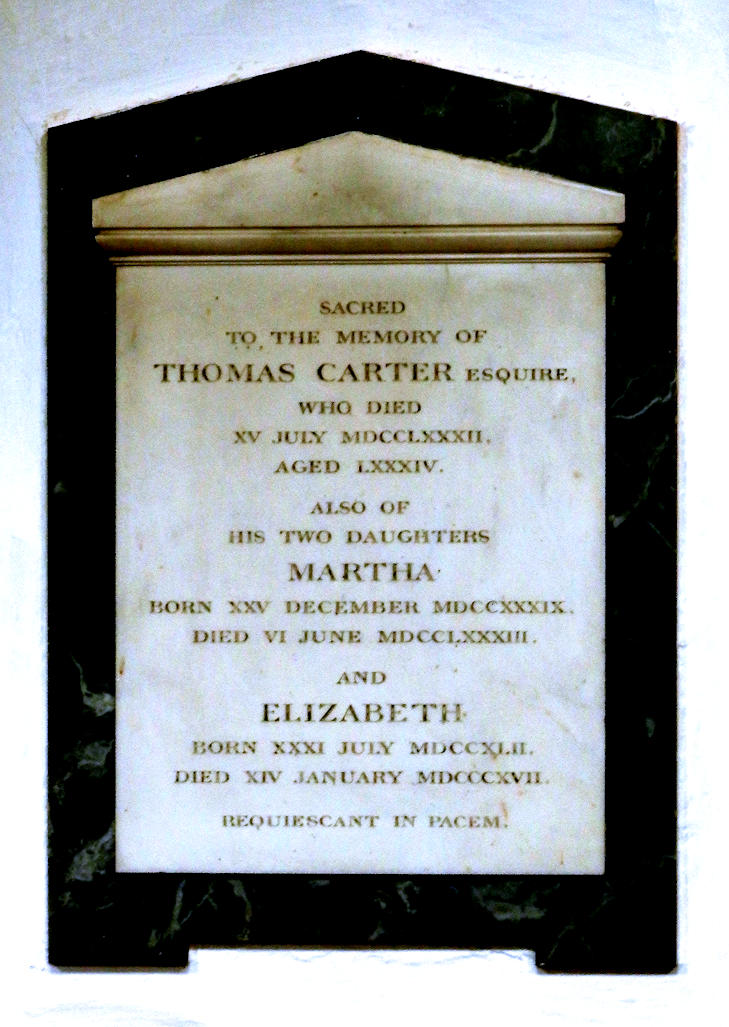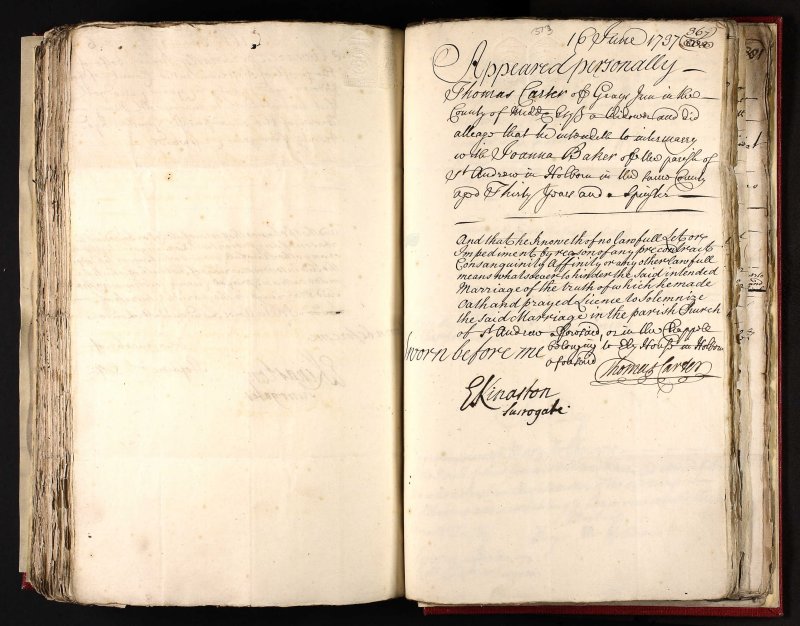The Penn tileries formed the most extensive, successful and well-organised commercial tile industry in medieval Britain. For over 40 years of the 14th century, between 1350 and 1380s, Penn tilers secured something very close to a monopoly in the South-East of England. They were manufacturing vast quantities of floor and roof tiles for royal palaces, monasteries and churches, manor houses and rich merchants’ houses, in London and the surrounding counties, including Windsor Castle and the Tower of London. l A gazetteer by Laurence Keen suggests that Penn tiles were used at some 180 sites across 18 counties outside London. The distances involved and the constant mention of Penn and Penn tilers by name, argue that they had easily surpassed any rivals in both workmanship and price.
No local memory of these Penn tilers, whose industry completely dominated the parish in its day, has survived, other than that provided by the place name Tylers Green and a road name, Clay Street. Nonetheless, we know far more about the workings of this 14th century tilery than any other, both because there are so many well documented royal orders and because tiles have been found in hundreds of different locations. A good deal of research has been done over the last 70 years, notably Christopher Hohler, who opened up the whole subject with his thorough field work and his two comprehensive articles in Records of Buckinghamshire, in 1941 and 1942. One of his stated purposes was to bring out the importance of the tileworks at Penn and he drew and numbered all the known Penn tiles (in a series beginning with P) and thus laid the foundations for their accurate recognition.
Penn’s only surviving kiln – A 17th C roof tile kiln was discovered in 2001, that is very similar indeed to the typical medieval floor tile kiln, except that it is made of flat bricks 9 x 4 x 2 ins (220 x 100 x 50mm) rather than of tiles and the oven is a little longer at just over 7 ft (2.20m) long and 6 ft wide (1.8m) internally. It is aligned east-west, at right angles to Elm Road, the main road (B474) through Penn, in the garden of Rose Cottage (recently badly damaged by fire), next to the entrance to the Penn & Tylers Green Sports Club. The kiln was discovered because a newly adopted planning policy required an archaeological evaluation before any new building or extensions are allowed along Elm Road and Church Road. The furnace with the oven above was set below ground level, as was usual, and the walls have survived to a height of 4ft 3 ins (1.3m). The kiln bars forming the floor of the oven were supported about 1 ft 4ins above the floor of the furnace. The oven walls would have been higher but had been deliberately collapsed into the furnace chamber after the kiln had gone out of use.
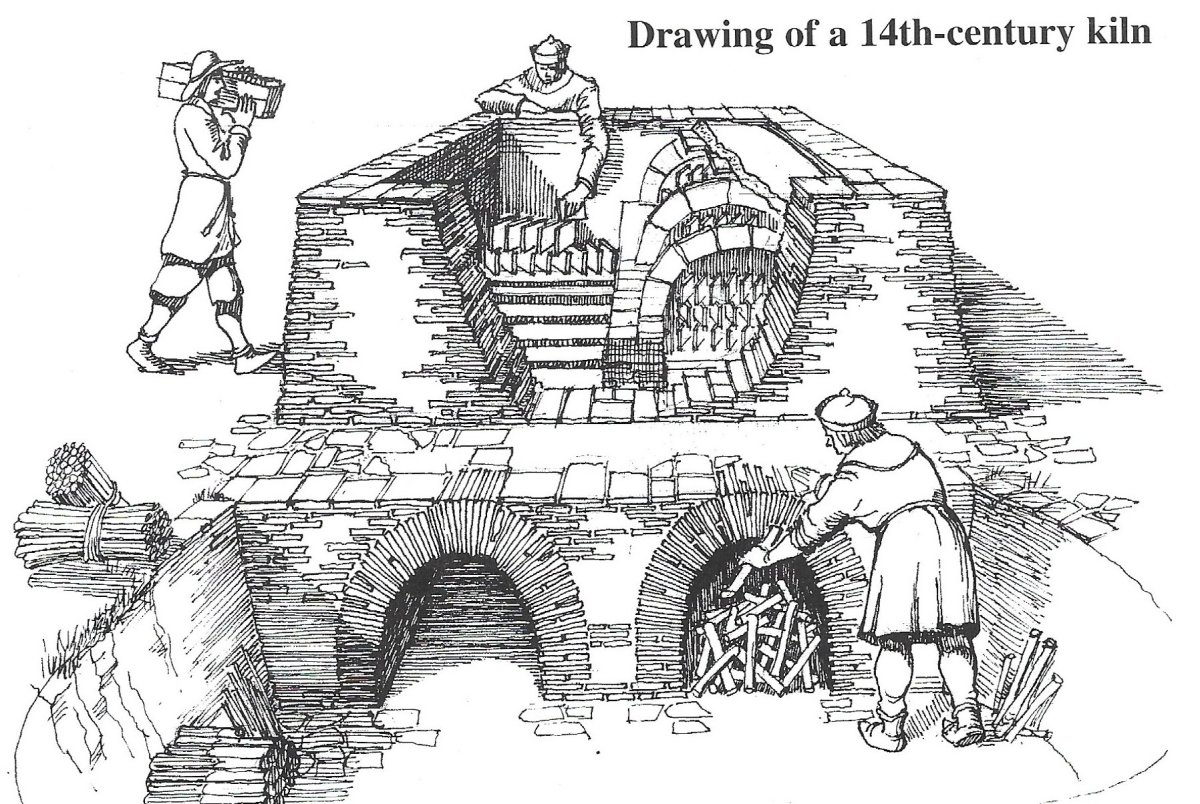
A typical 14th century tile kiln with front wall removed to show the inside. this drawing is an imaginative reconstruction based on all the information available. Tilers are shown preparing for firing by putting firewoood into one of the two stoke holes, bringing a box of tiles and stacking them in the kiln. Drawn by Mike Lamont.
Fragments of eleven medieval Penn tiles were found in the rubble of the furnace and stokehole. Some of them are wasters or unfinished, indicating that they may have been made on or close to the site although they were not found in their original medieval context. Five of them were nearly whole and were recognisably those classified by Hohler or variants of them.
Two separate, tile-built walls were revealed by the same trial trench, both orientated parallel to the main road and at right angles to the kiln. One was unusually wide at 2 ft 6 ins (0.75m) and was well-made of courses of fragments of plain square floor tiles and roof tiles. The report tentatively proposed that the tiles used indicated a 17th or 18th C building used as a drying or storage shed, but a subsequent reassessment has suggested that the wide, well-built tile wall could have been part of an earlier medieval kiln. It may be that the orientation with the stokehole at the west end was with the deliberate intention of taking advantage of the prevailing westerly winds to fan the flames in the fire boxes.
The survival of roof tilers – There is documentary evidence that roof tilemaking survived in Penn after the 14th C, supplying local needs. For instance, the great barn of Bassetsbury Manor in High Wycombe was repaired in 1411 with 1,000 plain tiles costing 3s 4d per 1000 with 12d for carriage from Penn. In 1512, there is a reference to a ‘tyle house lying at tyler-ende’ in Penn. The fact that the tiles were worthy of note suggests that ordinary buildings were not tiled, but probably thatched. In 1552, an inventory of goods in Penn Church untypically ends with the statement ‘The church is tyled’, which probably refers to the medieval floor tiles rather than the roof. The Penn parish register for 1580 records the burial of John Playter, a tiler. Physical evidence of the survival of the industry is provided by the late 17th C roof tile kiln found in 2001 at Rose Cottage, Elm Road
Tyler End Green – The name Tylers Green still reminds us of the local importance of the tilers. Tyler End, as a hamlet of Penn, is recorded in a 1493 property deed. It replaced an earlier name of Garrett Green or Gerrards Green, presumably in the 14th C. The name Tyler End Green was used for the next four hundred years until the ‘End’ started to drop out of use during the 18th C. The 1841 census still had Tylers End Green, but it was Tylers Green, Penn in the 1851 census, although even in 1854, Zachariah Wheeler, who was building St Margaret’s Church, was still referring to the ‘tilend green church’. As a hamlet grew up on the Wycombe side of the border, it borrowed the name of Tyler End Green from Penn and has now become Tylers Green. Clay Street and Potters Cross are two more place names in the parish associated with working clay.
1918 Penn Church – The parish register notes that, in 1918, Lord Howe retiled the chancel floor in marble. Hohler recorded that tiles out of Penn Church had strayed into the Herts County museum at St Albans and he drew the seven different designs that he saw there. These chancel tiles are now in the Verulamium Museum. The nave floor was stripped of tiles during the 19th C and replaced by a timber floor between the pews.
The cover of the book ‘Medieval Penn Floor Tiles’ is an artists impression of how the original chancel floor might have looked.
1967 Mosaic tiles in Penn church grave – the Vicar of Penn, The Rev. Oscar Muspratt, found tiles lining two graves just outside the door to the north porch of the church, but there was only time for a quick examination of one and a half of them. He sent 19 tiles to Elizabeth Eames at the British Museum, who was particularly impressed by two of the floor tiles that are now in Penn’s Lady Chapel, because they are totally different from all other Penn tiles. They seem to have been made by the method which preceded the use of any stamp, that of incising as a freehand drawing, since lines cross eachother beyond the point where they should end. Both are the central parts of a mosaic and are the first evidence of this earlier mosaic technique to be found in Penn. The presence of both types together in the grave suggests that both techniques were being used at the same time or had at least overlapped. The much more laborious manufacture of mosaic shapes was finally abandoned after the Black Death in favour of the simpler and cheaper square tiles.
One of the tile fragments is about a quarter of a round tile or roundel, originally about 8 ½ ins (225mm) in diameter, and is decorated with the outlined figure of a pilgrim with staff and satchel with a border inscribed .. M SEMPER A… The other is a lion’s face in profile on an octagonal tile about 6 ½ inches (160mm) across. Both had been coated with white slip and the incised decoration appeared as brown lines on yellow. Both seem to have been wasters as a result of breakage. Their fabric is comparable with that of the usual Penn tiles.
There were a further 17 tiles, of which five were plain green glazed and three were plain yellow. The presence of stabbing holes on the base of three of the plain green tiles was unusual for Penn but typical of an earlier ‘Stabbed Wessex series’, which Elizabeth Eames had thought might have been the work of an itinerant band of tilers. There were eight decorated fragments, in seven different designs, of which five have not been found elsewhere in Penn and only one is of a design known to have been laid in Penn church itself.
Following the retirement of the Rev, Oscar Muspratt, a further 32 floor tile fragments were found in the vicarage, wrapped up in 1967 newspaper. He later thought that they must have come from the graves outside the north porch door, in addition to those he had sent to the British Museum. There was one unrecorded tile of particular interest. It was a complete polygonal tile with a fabric apparently similar to the other tiles in the grave. It was decorated with the crudely drawn head of a lion or mythical beast that appears to have been part of a 9-tile mosaic requiring a large octagonal tile at its centre. This octagonal tile would have had a side of about 2 ¾ inches (72mm), much the same size as the incised example with a lion’s face discussed above, although these two particular tiles are not contemporary.
Apart from the mosaic polygonal tile, there were varying numbers of seven known designs. Altogether, 23 out of the 32 pieces had matching designs with the earlier British Museum collection from the grave, but there was only one shared design with the tiles that used to be in the church itself.
The focus of the Penn tile industry – The vast majority of tile finds have come from the three gardens, Grass Side, Cobblers and Yew Tree Cottage, all of which back on to the same large clay pit at the end of Beacon Hill. Two reported kiln sites (T1 & T2) are close by, and it is also noteworthy that Slades Garage, which was formerly a blacksmith, is adjacent. The record shows that there has been a blacksmith on the same site since the 18th C and it could well be that 14th C blacksmiths were working there making lath nails and iron-bound forms for the tilers, shoeing their horses and repairing their carts.
Chemical analysis of the tiles and other ceramics has not yet been able to distinguish between different clay sources in the same production area and so we have to rely on tile designs for clues about where particular tiles were made. This may seem a hopeless cause but the table below is surprisingly informative:
Site where tiles No.of different Same designs in Same designs in
were found designs found Beacon Hill gardens Stratfords Cottage
Penn Church (chancel) 7 5 1
Aerary, Windsor Castle 10 8 1
Amersham Church 3 3 0
Missenden Abbey 6 3 2
St Albans 8 3 5
This is only a snapshot, but it does suggests that a Beacon Hill kiln was the source of most, if not all the tiles used on the first three sites and that this area was the main focus of the tile industry, at least in the 1350s when the Aerary floor was laid. The finds at Beacon Hill of the earlier designs – the St Alban’s type tile and the 6 inch square tile – also show that tiles were being made there before the Black Death. Only 4 out of 14 designs found at Stratfords Cottage match those from Beacon Hill and this suggests different tileries with different markets, though with some overlap of popular designs as might be expected.
2002 Lady Chapel Millennium floor tile project – There have not been any Penn tiles on display to the public in Penn or Tylers Green, following the removal of those in the chancel of Penn Church in 1918. It was therefore decided that they should be built into the Lady Chapel as part of its Millennium restoration. The British Museum readily returned those that had been submitted for an opinion in 1967 and a local appeal produced a generous response, with a very large number coming from the garden of Grass-Side in Church Road.
25 different designs have been used to make up a mosaic on the altar platform and they are set in a surround of Bath stone. A centre of complete, newly made tiles of a typical Penn four- tile design, gives a very good idea of how a complete floor would have looked when it was laid. Mrs Diana Hall, of Wimborne St Giles, Dorset, made these new tiles, following the same methods of preparation, forming, decorating and glazing as the 14th C tilers, although using a modern gas kiln. The colour and appearance of the original tiles has been captured very effectively and the overall effect is both informative and pleasing.
For more detailed information see Miles Green’s book ‘Medieval Penn Floor Tiles’ available from the Penn and Tylers Green Website.

